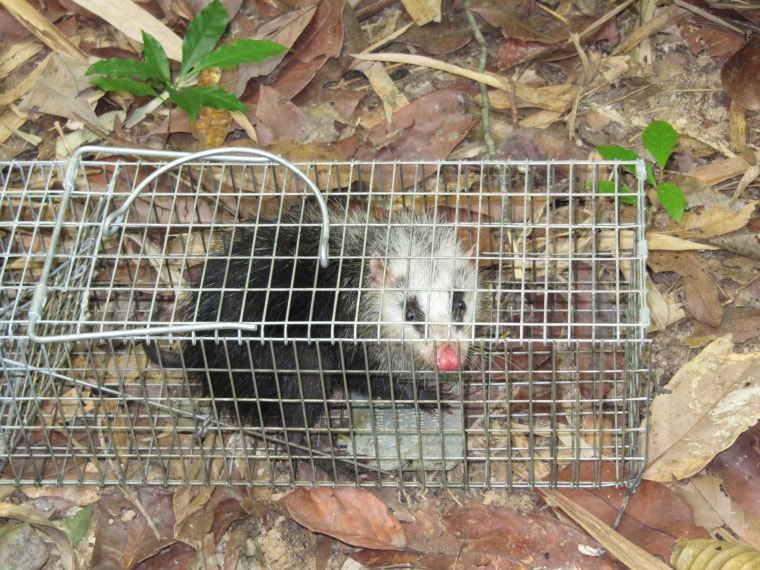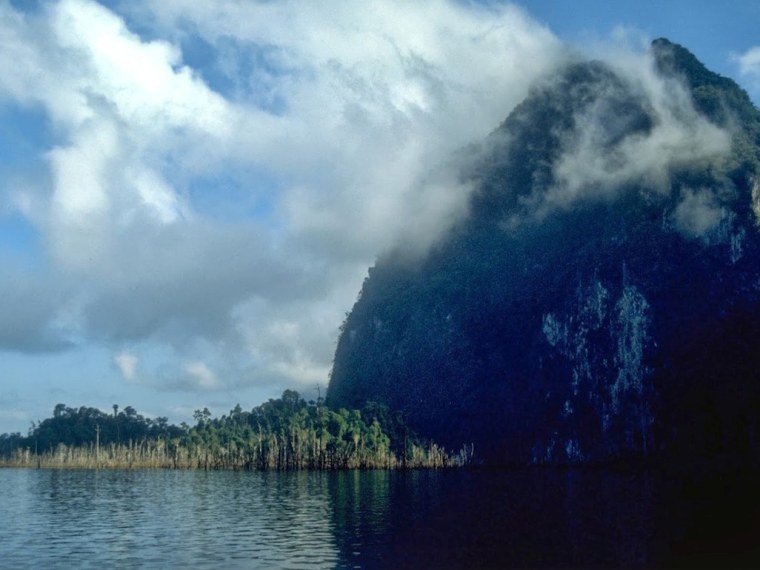In 1987, the Thai government finished flooding 65 square miles of rainforest to feed a hydroelectric dam. The wide blanket of jungle, chock-full of small mammals, became an inland archipelago comprising more than a hundred tiny islands. Stranded, the smallest of the furry critters are now dying off. All but one, that is: The hardy Malayan field rat.
This isn't just a problem in Thailand, say researchers. Jungle tracts across the world are being carved into isolated patches, separated by roads or agriculture. The rapid elimination of the island mammals in the Chiew Lam Reservoir foretells the fate of forests elsewhere.
"We observed the annihilation of an entire group of animals — all native small animals," Luke Gibson, a graduate student at the National University of Singapore told NBC News, adding that the "dramatic results are a warning" for other similarly fragmented landscapes. "It seems really bleak for these small forest fragments," he said.

After setting and checking traps every week for one year across 16 islands, Gibson counted just 13 individual animals — a ragged handful of treeshrews, ground squirrels, tree mice, spiny rats — even a non-rodent cousin of the hedgehogs that goes by the name "moonrat."
In the study, appearing in Science this week, the team also noted the rapid proliferation one species, the Malayan field rat — a native of the region, but a farm dweller rather than a middle jungle type. Gibson and his crew caught more than 300 of the rats in the last year. Even on the smallest islands, they appeared to be thriving, feasting on the seeds of the coastal bamboos. Gibon says the field rat numbers rose as those of other jungle rodents dropped, but can't yet say how or if field rats helped kill off their forest cousins.
Prior to the flooding, large mammals like rhinos, elephants, tigers and tapirs could also be spotted in the region, but they have since fled, Gibson said. None can be found on the islands, and they've even disappeared from the forested fringes of the lake.
This new study adds to a growing body of evidence that suggests that preserving forest segments isn't enough to preserve biodiversity — it's crucial that they stay connected.
"You want to make sure the forests are continuous," Stuart Pimm, an ecologist at Duke University who was unconnected with the study told NBC News. "If they're going to be in tiny fragments, they're going to be biologically worthless."
Forests in agrarian Brazil and India may not be marooned by water, but are separated by human-made features. In such cases, "farmland and pasture and people can be a inhospitable landscape" as well, Pimm said.
What can help is reconnecting patches of land, which Pimm has been doing as part of his Saving Species organization. This month, he co-authored a paper in Science which indicated that strategically protecting a connected patchwork of forested zones by 2020 — only 17 percent of global land area — could save up to 60 percent of the world's plant species and the animals that lived in them.
As Gibson and his team's new study affirms, without protected paths that connect them, saving isolated patches of land won't do much good.
More about saving species:
- A shark that walks! Discovery is a good sign for Indonesia
- Saving most of Earth's plants may take just a bit of land
- 'Lost' rainbow toad rediscovered
In addition to Luke Gibson, the authors of Near-Complete Extinction of Native Small Mammal Fauna 25 Years After Forest Fragmentation include Antony Lynam, Corey Bradshaw, Fangliang He, David Bickford, David Woodruff, Sara Bumrungsri, and William Laurance.
Nidhi Subbaraman writes about science and technology. You can follow her on Facebook, Twitter and Google+.
